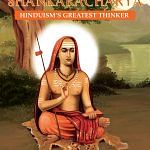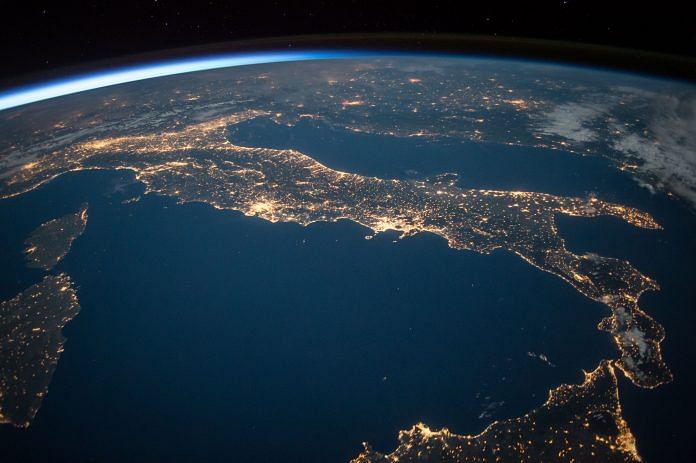The essential question is, unless explicable by a cause and determinate structure, why do we need this cosmic multiplicity? While Shankara was clear that Brahman is the only reality pervading the universe, he accepted that he has no clear answer to this question. Why this universe exists, and what is its relationship with Brahman, was, he said, anirvachaniya, indefinable and inexpressible.
Modern science too is saying the same. The more we probe the world, at both its macro and micro level, the more we are stumped about how it came about, why it exists, how long it will last? Does it have a conventionally definable creator? And what is the relationship between the creator and the universe? Till a few centuries ago, scientists believed that they could—and indeed had—solved the riddle of the universe. The cosmos was explicable through verifiable causes, and the effects of such causes could be comprehensibly established. But this smug certitude has eroded in direct correspondence with the greater knowledge we have about the cosmos today. Scientists too are grappling with the larger questions of ‘why’ and ‘what for’, and looking for that one cause that can fully provide a unified theory of the universe. That search has not yet yielded a final answer, and so the relationship of the universe to a creator or first cause remains precisely what Shankara said, anirvachaniya, indefinable.
Scientists did not accept this easily. Einstein continued to believe—in spite of his own discoveries refuting absolute time and space—that there had to be some explanation to why the universe exists, some fundamental laws that make this cosmic magnitude, in terms of final answers, less opaque. ‘The most incomprehensible fact about nature’, he once said, ‘is that it is comprehensible.’
A couple of decades later, Stephen Hawking was equally reluctant to accept defeat. ‘Was it all just a lucky chance?,’ he asks with obvious incredulity. If the Big Bang was, indeed, the beginning of creation, there could be the Big Crunch, where the universe would end by re-collapsing on itself. But, even if there was the possibility of one unified theory of creation and dissolution, he himself admits that it is no more than,
just a set of rules and equations. What is it that breathes fire into the equations and makes a universe for them to describe? The usual approach of science of constructing a mathematical model cannot answer the questions of why does the universe go to all the bother of existing? Is the unified theory so compelling that it brings about its own existence? Or does it need a creator, and, if so, does he have any other effect on the universe? And who created him?
Brahman is the ground of all that exists, but why Brahman needs to create a universe so diverse, in which, on earth itself there are 1.4 million animal species and half a million species of plants, remains, as Shankara said, anirvachaniya, not entirely comprehensible. But, if this cosmic multiplicity is incomprehensible, the ground which gives rise to it, Brahman, is, according to Shankara, eternal, without a finite beginning or end. The universe, therefore, is also, as an emanation of Brahman, part of a beginning-less and endless cycle of creation. The attempt to give the observable universe a finite beginning, as best represented by the Big Bang theory, and a finite end, as would happen if the Big Crunch took place, begs the question: what existed before the Big Bang, and could not another universe emerge after the Big Crunch?
Indeed, scientists today are asking the same question. Even amidst the euphoria of new discoveries in quantum physics, British physicist, Sir Bernard Lovell wondered about what could be before beginnings or endings were identified by human calculation. ‘There we reach the great barrier of thought,’ he admitted, ‘because we begin to struggle with the concepts of time and space before they existed in terms of our everyday experience. I feel as though I’ve suddenly driven into a great fog barrier where the familiar world has disappeared.’ Stephen Hawking, is himself assailed with doubt. The quantum theory of gravity, he argues,
has opened up a new possibility, in which there would be no boundary to space-time and so there would be no need to specify the behaviour at the boundary. There would be no singularities at which the laws of science broke down and no edge of space-time at which one would have to appeal to God or some new law to set the boundary conditions of space-time. One could say: “The boundary condition of the universe is that it has no boundary.”
The universe would be completely self-contained, and not affected by anything outside itself. It would neither be created nor destroyed. It would just BE. Modern science is thus validating the basic Advaitic concept that, in conformity with the eternal nature of Brahman, the universe too is part of a successive cycle of manifestation and dissolution, and this process is eternal in nature.
 This excerpt from ‘Adi Shankaracharya: Hinduism’s Greatest Thinker’ has been published with permission from Westland.
This excerpt from ‘Adi Shankaracharya: Hinduism’s Greatest Thinker’ has been published with permission from Westland.



